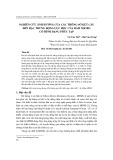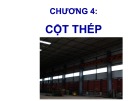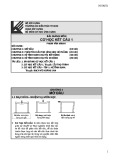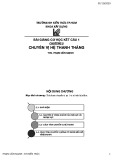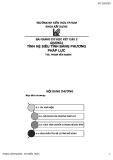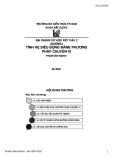
Journal of Science and Transport Technology Vol. 1 No. 1, 24-33
Journal of Science and Transport Technology
Journal homepage: https://jstt.vn/index.php/en
JSTT 2021, 1 (1), 24-33
Published online 25/11/2021
Article info
Type of article:
Original research paper
DOI:
https://doi.org/10.58845/jstt.utt.2
021.en.1.1.24-33
*Corresponding author:
E-mail address:
hoainam.vu@utt.edu.vn
Received: 06/10/2021
Revised: 11/11/2021
Accepted: 18/11/2021
Nonlinear buckling and postbuckling of spiral
stiffened FG-GPLRC cylindrical shells
subjected to torsional loads
Le Kha Hoa1, Vu Tho Hung2, Pham Hong Quan3, Vu Hoai Nam2,*
1Military Academy of Logistics, Hanoi 100000, Vietnam
2University of Transport Technology, Hanoi 100000, Vietnam
3University of Transport Technology, Vinh Phuc 280000, Vietnam
Abstract: The nonlinear buckling behavior of functionally graded graphene
platelet reinforced composite (FG-GPLRC) cylindrical shells reinforced by ring,
stringer and/or spiral FG-GPLRC stiffeners under torsional loads is studied by
an analytical approach. The governing equations are based on the Donnell
shell theory with geometrical nonlinearity of von Kármán-Donnell-type,
combining the improvability of Lekhnitskii’s smeared stiffeners technique for
spiral FG-GPLRC stiffeners. The effects of mechanical and thermal loads are
considered in this paper. The number of spiral stiffeners, stiffener angle, and
graphene volume fraction, are numerically investigated. A very large effect of
spiral FG-GPLRC stiffeners on the nonlinear buckling behavior of shells in
comparison with orthogonal FG-GPLRC stiffeners is approved in numerical
results.
Keywords: Functionally graded graphene platelet reinforced composite (FG-
GPLRC); Spiral stiffener; Nonlinear buckling; Torsional load; Cylindrical shell.
1. Introduction
The circular cylindrical shell is the typical
structure of revolution shells. Due to the closed
circumferential condition, the thermo-mechanical
behavior of these structures is complex. The linear
and nonlinear buckling investigations of cylindrical
shells made from classical and modern materials
have been the interesting matters for the
researcher in the world, where, the torsionally
loaded problems are the difficult and exciting
problems.
The stability and vibration responses of
isotropic and functionally graded (FGM) cylindrical
shells under torsional loads were investigated and
discussed in a relatively comprehensive way by
many authors [1-10]. Recently, the nonlinear
torsional postbuckling behavior of FGM cylindrical
shells reinforced by homogeneous or FGM spiral
stiffeners was also studied and showed the special
effects of spiral stiffened reinforcement on the
thermo-mechanical behavior of shells [8-10]. The
significant effects of spiral stiffeners were also
validated in the case of axially loaded FGM
cylindrical shells [11] taking into account the
thermal environment. Additionally, another type of
revolution shell as a toroidal shell segment was
mentioned by Phuong et al. [12] in the case of
functionally graded graphene-reinforced
composite laminated structures subjected to
external pressure.
Graphene is known to be a metamaterial with
extraordinary thermo-mechanical properties.





